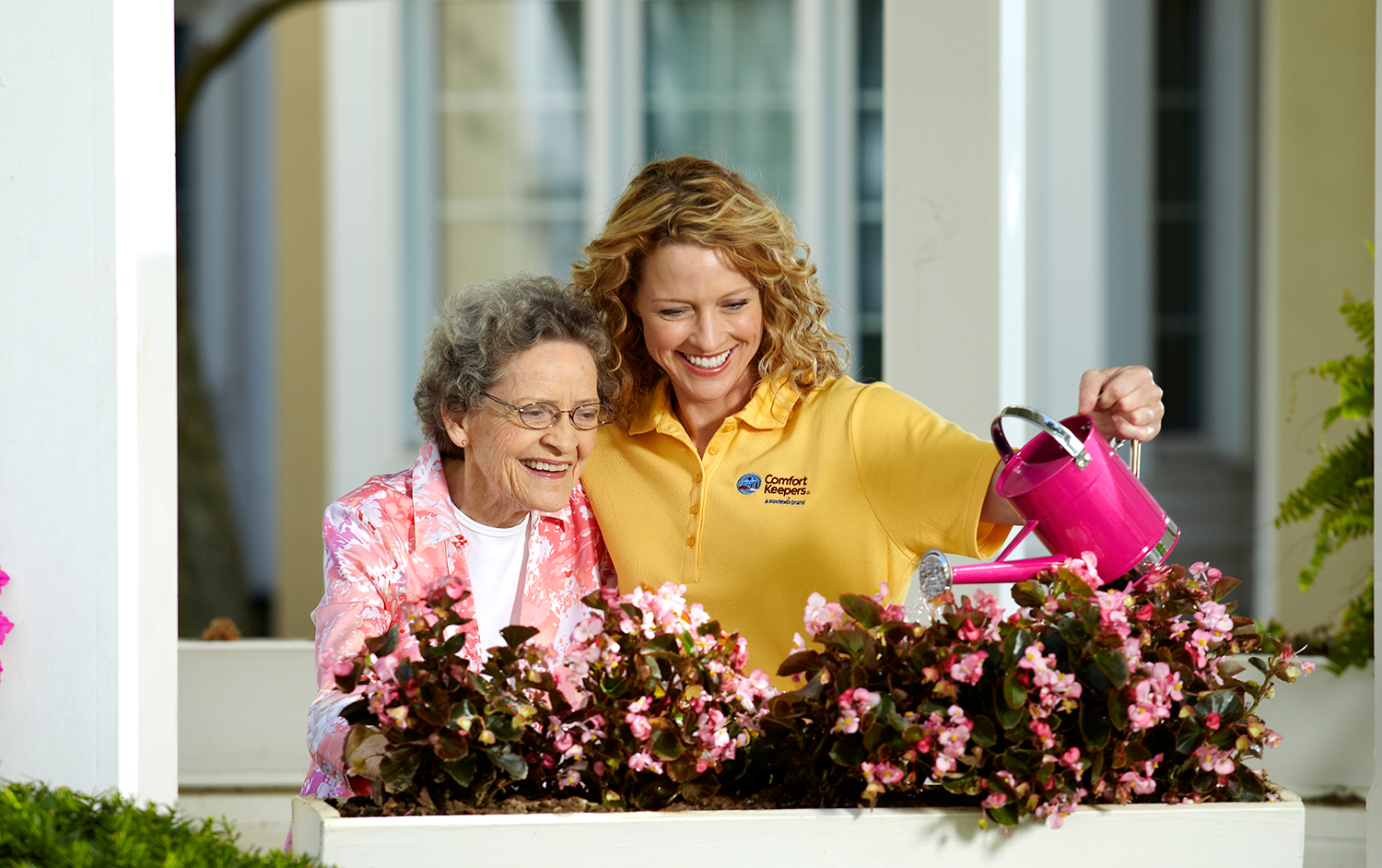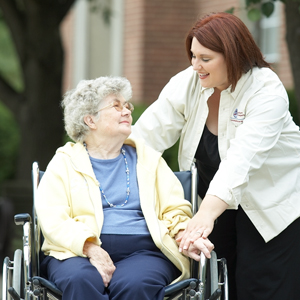Glaucoma: What Seniors Should Know
Blog | January 26, 2017
Glaucoma is a group of diseases that can damage the eye’s optic nerve and result in vision loss. It is also the second leading cause of blindness. Glaucoma occurs when the normal fluid pressure inside the eyes slowly rises and up to 40 percent of a person’s vision can be lost without them even noticing. However, with early treatment, your eyes can be protected against serious vision loss.
Why Do Some Seniors Develop Glaucoma?
In the front of the eye is the anterior chamber. A clear fluid continuously flows in and out of the chamber, nourishing nearby tissues. The fluid leaves the chamber at the open angle where the cornea and iris meet. When the fluid reaches the angle, it flows through a spongy meshwork that acts like a drain, and leaves the eye. Sometimes, when the fluid reaches the angle, it passes too slowly through the meshwork drain. As the fluid builds up, the pressure inside the eye rises to a level that may damage the optic nerve and vision loss may result. That’s why controlling pressure inside the eye is important.
Not every person with increased eye pressure will develop glaucoma. Some people can tolerate higher eye pressure better than others. A comprehensive dilated eye exam can help your eye care professional determine what level of eye pressure is normal for you.
Most Common Types of Glaucoma in Seniors
Open-angle Glaucoma: The most common type of glaucoma, affecting nearly 3 million Americans, this form results in a slow, painless loss of peripheral vision. It happens when the eye’s drainage canals become clogged over time. Vision damaged this way is like looking through a paper towel tube. Most people have no symptoms and no early warning signs, and may not notice sight loss for many years. This type usually responds well to medication, especially if caught early and treated.
Low-Tension or Normal-Tension Glaucoma: Optic nerve damage and narrowed side vision can occur in people with normal eye pressure. Lowering eye pressure by at least 30 percent through medicines slows this form of disease in some, however, it may worsen in others despite low pressures. A comprehensive medical history is important in identifying potential risk factors, such as low blood pressure. If no risk factors are identified, the treatment options are the same as for open-angle glaucoma.
Angle-Closure Glaucoma: In this type of glaucoma, the fluid at the front of the eye cannot reach the angle and leave the eye, and the angle gets blocked by part of the iris. This results in a sudden increase in eye pressure. Symptoms include severe pain and nausea, redness of the eye, and blurred vision. If you have these symptoms, you need to seek medical emergency treatment immediately. Without treatment, the eye can become blind in as few as one or two days. Usually, prompt laser surgery and medicines can clear the blockage and protect sight.
There are also rare types of glaucoma that can affect seniors. For example, pigmentary glaucoma occurs when pigment from the iris flakes off and blocks the meshwork, slowing fluid particularly threatening to vision over a lifetime. Trauma-related glaucoma can be caused by a serious blow to the eye, chemical burn, or a penetrating injury.
What Seniors Can Do
Presently, there is no cure for glaucoma. However, medication or surgery can help slow or prevent further vision loss. The appropriate treatment depends upon the type of glaucoma a person has.
Over time, some drugs may stop working or have negative interactions with other prescriptions. Only a physician can appropriately monitor glaucoma and glaucoma medications. If you are being treated for glaucoma, be sure to take your glaucoma medicine every day.
Studies have shown that the early detection and treatment before there is major vision loss is the best way to control the disease. Make sure to have your eyes regularly examined through dilated pupils by an eye care professional. After the age of 40, get an exam every two to four years, and annually after the age of 55. Full annual exams are recommended for those over age 50 with a family history of glaucoma.
Comfort Keepers® can help. We can help loved ones around the home with assistance in activities of daily living, household tasks, and by encouraging those we serve to eat well and take their medications. Contact your local Comfort Keepers office to discuss the many in-home care services we offer.
References:
AgingCare.com. “Glaucoma Can Steal 40% of Vision Before the Person Notices” by Marlo Sollitto. Web.2016.
A Place for Mom. “Glaucoma In Seniors: Symptoms & Care” by Jeannette Franks, PhD. Web. 2013.
Glaucoma Research Foundation of Canada.“Glaucoma Facts and Stats.” Web. 2016.
Individualized Home Care Options
Long-Term Home Care, 24 Hour Home Care & Short Term Care Options Customized for You







